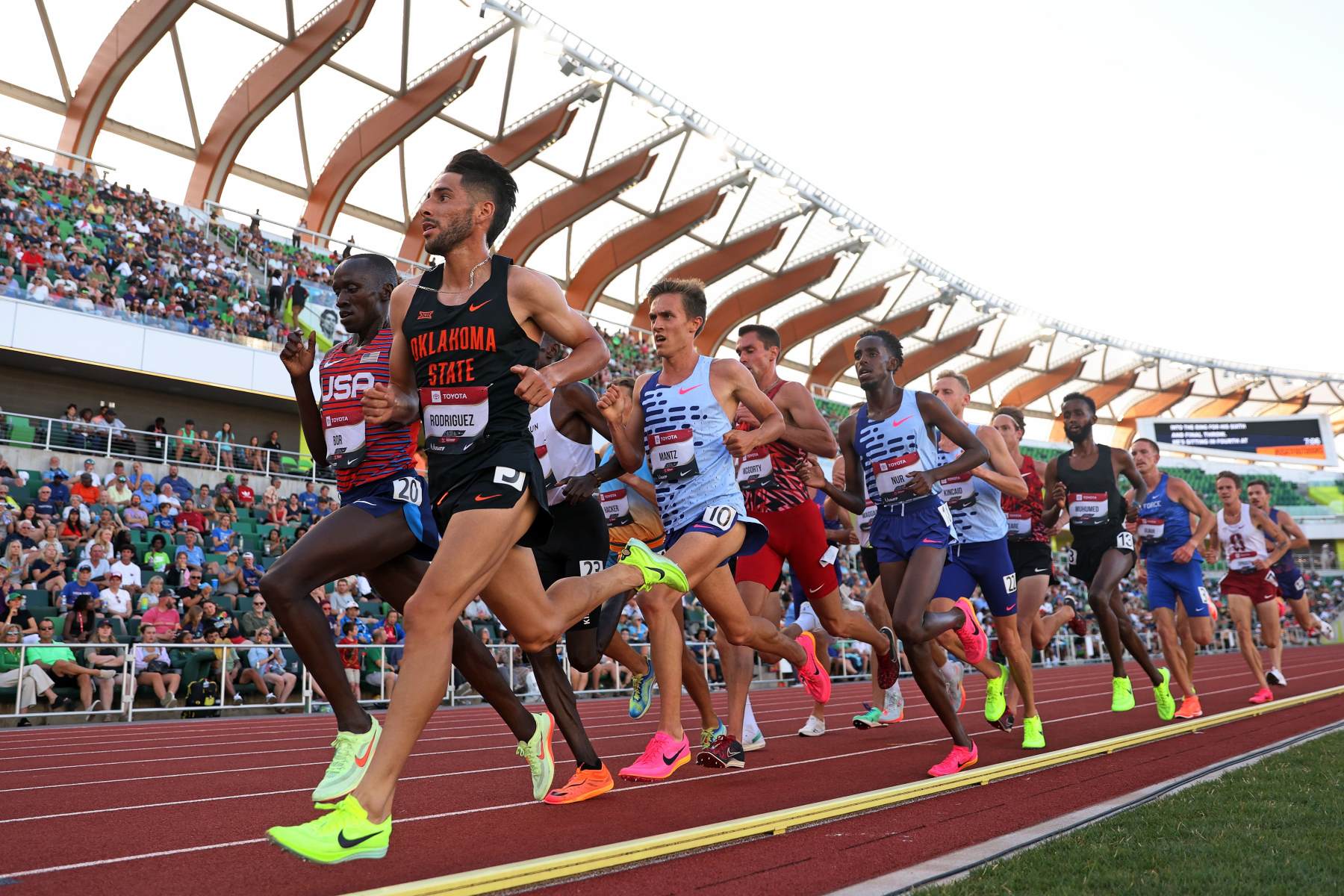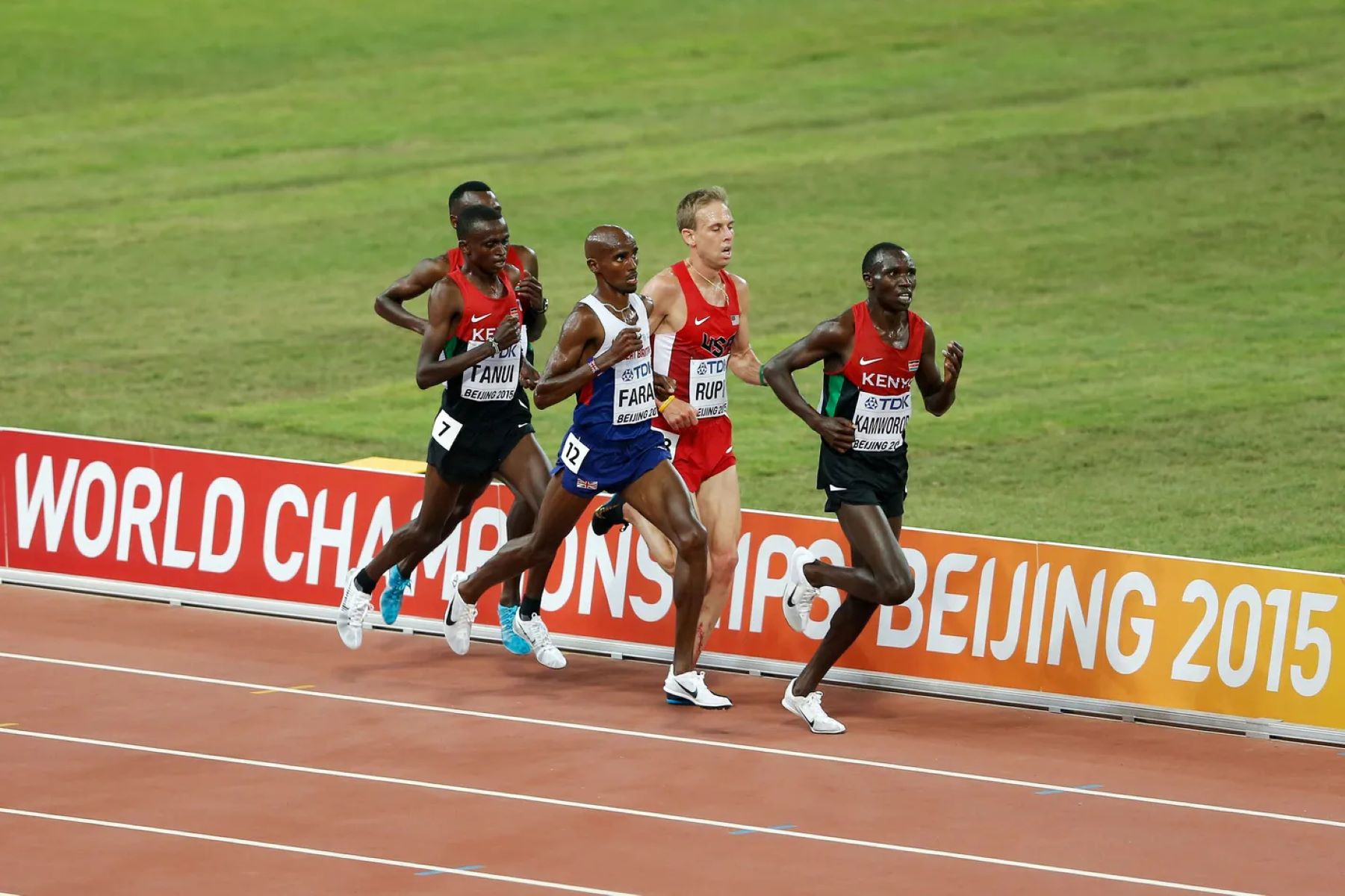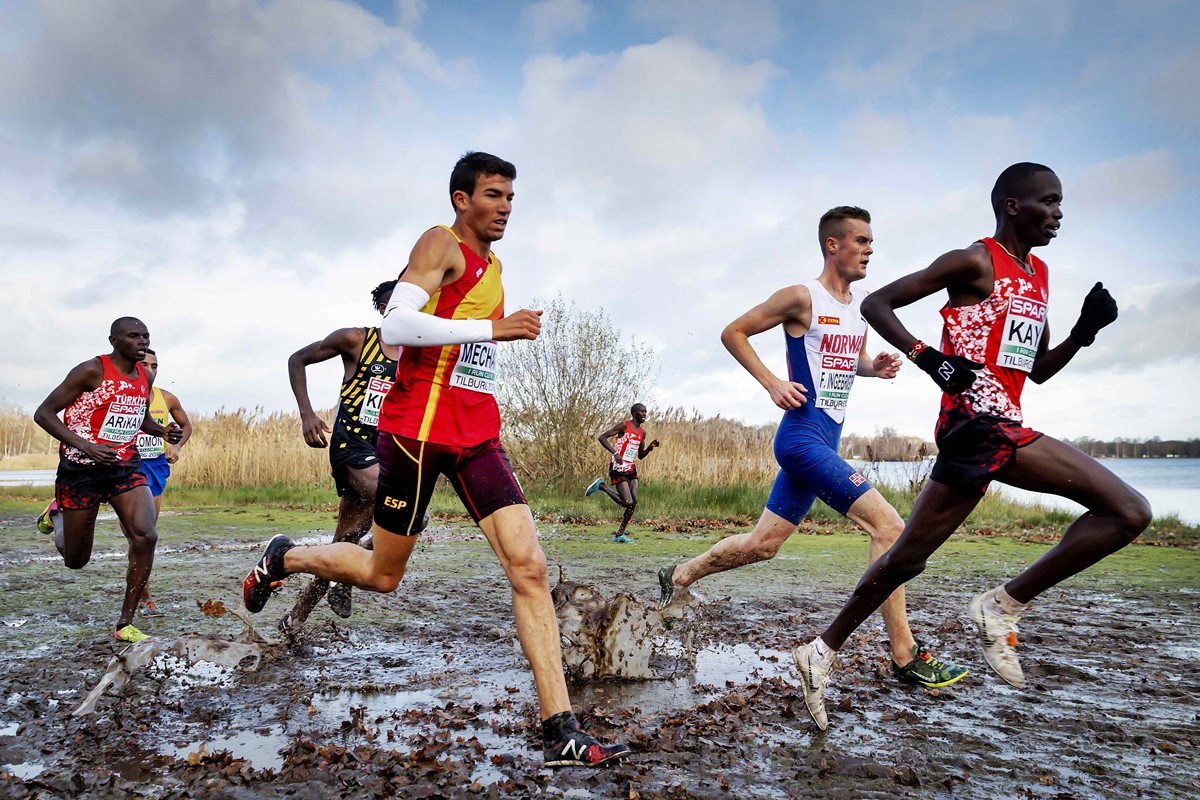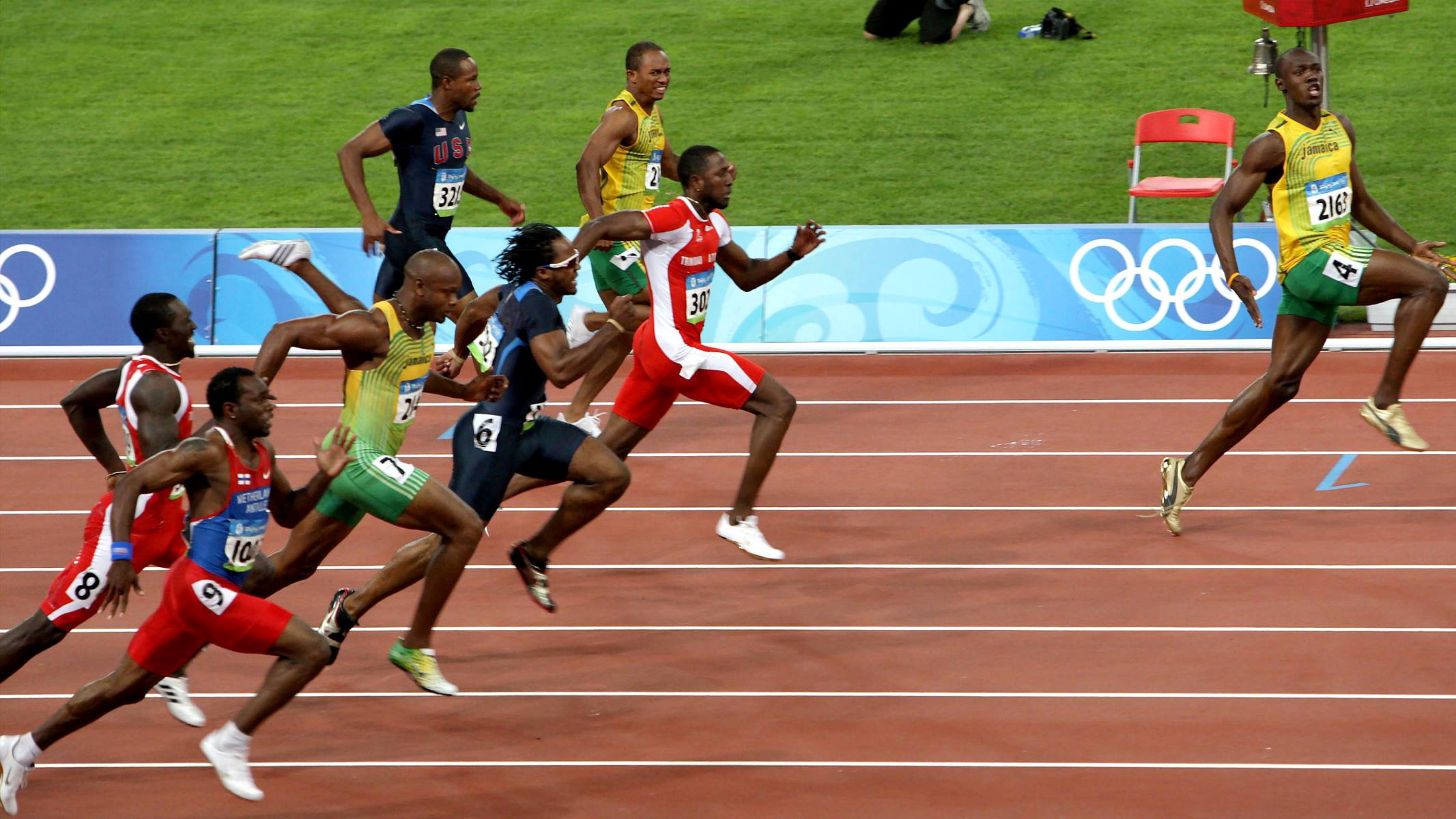

Featured
How Long Is Track And Field Season?
Modified: January 22, 2024
Discover the duration of the track and field season and get a glimpse into its featured events. Unearth everything you need to know about the length of this exciting athletic season.
Introduction
Track and field is a popular sport that captivates athletes and fans alike with its thrilling displays of speed, strength, and agility. Whether you’re a seasoned athlete, an aspiring competitor, or simply a curious enthusiast, understanding the dynamics of the track and field season is essential. In this article, we will delve into the duration and structure of the track and field season, providing you with insights into the pre-season, regular season, championships, and off-season training.
Track and field encompasses a vast array of events, ranging from sprints and jumps to throws and distance races. It is a sport that showcases the athleticism, determination, and discipline of its participants. Athletes train meticulously to hone their skills and achieve peak performance during the season.
While the track and field season varies depending on factors such as location, level of competition, and age group, the general structure remains consistent. Understanding the timeline and phases of the season can help athletes and coaches plan their training and competition schedules effectively.
In the following sections, we will explore the different phases of the track and field season, highlighting the pre-season preparation, regular season competitions, championships and post-season events, as well as the off-season training and rest period. By gaining a comprehensive understanding of the track and field season, you’ll be well-equipped to navigate the world of this thrilling sport.
Overview of Track and Field
Track and field is a diverse and exciting sport that encompasses a wide range of events, grouped into four main categories: sprints, jumps, throws, and distance races. Each category tests different aspects of an athlete’s physical abilities, from raw speed and explosive power to technique and endurance.
Sprints are short-distance races, typically ranging from 100 meters to 400 meters. They require athletes to explode out of the blocks and maintain maximum speed over a short period of time. The 100-meter dash, often referred to as the “blue ribbon” event, is widely recognized as the ultimate test of speed and acceleration.
The jumping events in track and field, including long jump, high jump, triple jump, and pole vault, focus on an athlete’s ability to generate power and achieve maximum height or distance. These events require a combination of technique, explosiveness, and coordination.
Throws involve launching an object, such as a shot put, discus, javelin, or hammer, as far as possible. These events require a combination of strength, speed, and proper throwing technique. Athletes in the throwing events need to generate explosive power and carefully coordinate their body movements to achieve maximum distance.
Distance races, ranging from 800 meters to marathons, test an athlete’s endurance and ability to sustain a fast pace over a longer period of time. These events challenge both the physical and mental capabilities of athletes as they push their limits to maintain speed and stamina.
Track and field events are held in different types of venues, including indoor and outdoor tracks, stadiums, and fields. Competitors participate in events as individuals or as part of a team, representing their schools, countries, or clubs. The sport has a rich history, with some events dating back to ancient Greece.
Track and field has not only a competitive aspect but also offers numerous benefits to participants of all ages. It helps develop physical fitness, discipline, goal setting, teamwork, and self-confidence. From recreational runners to elite athletes competing at the Olympics, track and field offers something for everyone.
Duration of the Track and Field Season
The duration of the track and field season can vary depending on several factors, such as the level of competition, geographical location, and age group. In general, the season typically spans several months to allow athletes ample time for training, competition, and recovery.
At the high school level, the track and field season typically starts in the spring, around the months of March or April, and concludes with state championships in May or June. This timeline allows athletes to take advantage of favorable weather conditions and ensures they have enough time to prepare for important competitions.
Collegiate track and field seasons often follow a similar schedule, with indoor competitions taking place during the winter months and outdoor competitions starting in the spring. College athletes may participate in both indoor and outdoor seasons, competing in a variety of events throughout the year.
At the professional and international level, the track and field season can extend over the course of several months, starting as early as January and concluding with major championships towards the end of the year. Athletes compete in a series of meets and invitationals, gradually building towards peak performance during key events.
For younger age groups, such as youth and junior athletes, the track and field season may align with the high school season or follow a separate schedule. These athletes often have opportunities to compete in youth championships or regional meets, allowing them to gain experience and showcase their skills.
It is important to note that the track and field season is not solely limited to competitive events. Training and preparation are key components of an athlete’s season. Athletes spend months refining their technique, building strength and endurance, and improving their overall performance. Coaches play a crucial role in designing training programs that align with the season’s timeline.
Overall, the duration of the track and field season varies depending on the level of competition and age group. It offers athletes ample time to train, compete, and showcase their skills while allowing for periods of rest and recovery to prevent injuries and maintain optimal performance.
Pre-Season Preparation
The pre-season is a crucial phase in the track and field season as it sets the foundation for an athlete’s performance. During this period, athletes focus on building their strength, improving their technique, and enhancing their overall fitness in preparation for the upcoming competitions.
One of the key aspects of pre-season preparation is strength and conditioning training. Athletes engage in weightlifting, plyometric exercises, and other forms of resistance training to build muscle, increase power, and improve athletic performance. They also incorporate cardiovascular exercises to enhance endurance and stamina.
In addition to physical training, pre-season also involves technical work. Athletes fine-tune their skills, focusing on aspects such as sprinting form, jumping technique, and throwing mechanics. They receive guidance from coaches, who emphasize proper body alignment, timing, and efficiency in each event.
Mental preparation is another essential component of the pre-season. Athletes work on mental skills such as visualization, goal-setting, and maintaining focus under pressure. They develop strategies to deal with performance anxiety, setbacks, and distractions, ensuring they are mentally strong and prepared for the challenges ahead.
Nutrition and proper hydration play a vital role in pre-season preparation. Athletes work with nutritionists or sports dieticians to create a well-balanced meal plan that supports training and recovery. They ensure they are fueling their bodies with the right nutrients to optimize performance and aid in muscle repair.
Rest and recovery are also important during the pre-season. Athletes may incorporate regular rest days and active recovery sessions into their training schedules to allow their bodies to recuperate from intense workouts. Adequate sleep is prioritized to aid in muscle repair, hormone regulation, and overall well-being.
Ultimately, pre-season preparation sets the stage for a successful track and field season. Athletes invest time and effort into building a strong physical foundation, improving technical skills, and enhancing mental resilience. By focusing on these aspects, athletes maximize their potential and set themselves up for success in the regular season and beyond.
Regular Season Competitions
The regular season of track and field consists of a series of competitions where athletes have the opportunity to showcase their skills and compete against opponents in their respective events. These competitions serve as a platform for athletes to gauge their progress, refine their strategies, and qualify for higher-level meets.
The regular season usually features a combination of dual meets, tri meets, invitationals, and relay meets. Dual meets involve two teams competing against each other, while tri meets involve three teams. Invitationals are larger events that attract teams from various schools or regions, providing a higher level of competition.
Depending on the level of competition, athletes may participate in multiple events during a meet. They can choose to specialize in their specific event or opt for multiple events to challenge themselves and accumulate points for their team. Coaches strategically select events that best suit their athletes’ strengths and goals.
During regular season competitions, athletes strive to achieve personal bests, improve their rankings, and qualify for postseason championships. They face opponents who push them to their limits, creating an atmosphere of excitement and competitive spirit. Spectators can witness thrilling races, impressive jumps, and powerful throws, making regular season meets a compelling sporting spectacle.
As the season progresses, athletes and coaches analyze their performances, identifying areas of improvement and adjusting training strategies accordingly. They make refinements to their techniques, assess their race strategies, and fine-tune their physical conditioning to optimize performance during competitions.
The regular season not only allows athletes to showcase their skills but also provides valuable opportunities for learning and growth. Athletes gain experience in managing race-day nerves, adapting to different track conditions, and developing mental toughness. They learn to cope with adversity, handle pressure, and make strategic decisions during their events.
Regular season competitions serve as a stepping stone towards higher-level meets, such as conference championships, regional championships, and national championships. Athletes who perform exceptionally well during the regular season have the opportunity to qualify for these prestigious events, where they can compete against the best in their region or country.
The regular season is an exciting and challenging period for track and field athletes. It provides them with opportunities to showcase their abilities, compete against formidable opponents, and gain valuable experience. Regular season competitions lay the foundation for success in postseason events, making them a crucial part of the track and field journey.
Championships and Post-Season Events
Championships and post-season events are the pinnacle of the track and field season. Athletes who have performed exceptionally well in the regular season have the opportunity to compete at higher-level meets and vie for titles, records, and accolades.
At the high school level, athletes compete in state championships, where they represent their schools and battle against the top performers from other schools in their region. These championships are highly anticipated events that showcase the talent and dedication of young athletes.
In the collegiate track and field scene, athletes compete in conference championships, regional championships, and national championships. These events bring together athletes from different universities, pitting them against each other in intense competitions that determine conference titles and qualifiers for national meets.
On the international stage, track and field athletes aspire to compete in events like the Olympic Games, World Championships, and continental championships. These highly prestigious events feature the world’s best athletes and serve as platforms for national pride and athletic excellence.
Championships and post-season events often take place over several days, encompassing a wide range of events across different disciplines. Athletes endure grueling schedules and fierce competition as they strive for podium finishes and records.
Post-season events also present opportunities for athletes to achieve qualifying standards for higher-level meets or earn selection for national teams. Athletes who excel in their events may be chosen to represent their country on the international stage, further fueling their aspirations and inspiring young athletes.
These championship events are not only significant for individual athletes but also for teams. Schools, colleges, and countries compete for team titles, fostering a sense of camaraderie and teamwork. Team success is determined by the collective achievements of athletes across various events.
Championships and post-season events are the culmination of months of hard work and dedication. Athletes strive to perform at their best, utilizing the skills, techniques, and mental fortitude developed throughout the season. These events provide a platform for athletes to leave a lasting legacy in the sport while setting new records and pushing the boundaries of human performance.
Ultimately, championships and post-season events are a celebration of the track and field season. They represent the pinnacle of athletic achievement, where dedicated athletes showcase their talents, determination, and passion for the sport, leaving an indelible mark in the history of track and field.
Off-Season Training and Rest Period
The off-season is a crucial phase in the track and field season as it provides athletes with an opportunity to rest, recover, and prepare for the upcoming season. It is a period where athletes can focus on addressing weaknesses and building a strong foundation for future success.
While it is important to take a break and allow the body to recover, the off-season does not mean complete inactivity. Athletes continue to engage in training, albeit with a reduced intensity and volume. The emphasis during this period is on maintaining fitness levels, improving weaknesses, and addressing any issues that arose during the previous season.
During the off-season, athletes may undergo a thorough evaluation of their physical condition, technique, and performance. They work closely with coaches and trainers to identify areas that require improvement and prioritize these aspects in their training programs.
Strength and conditioning training plays a vital role in the off-season, focusing on building strength, power, and overall athleticism. Athletes may engage in resistance training, plyometric exercises, and cross-training activities to enhance their physical abilities and prevent injuries.
Off-season training also allows athletes to explore new training methods, refine their technique, and experiment with different strategies. This period of exploration and experimentation can lead to breakthroughs and improvements in performance, setting the stage for a successful upcoming season.
Rest and recovery are equally important during the off-season. Athletes allocate time for adequate rest, allowing their bodies to repair and restore any damage caused by the intense training and competition. Recovery strategies may include activities such as massage therapy, proper nutrition, and sufficient sleep.
Mental rejuvenation is another critical aspect of the off-season. Athletes take the opportunity to refresh their minds, refocus their goals, and recharge their motivation. They may engage in activities unrelated to track and field, spend time with loved ones, or pursue hobbies that bring them joy and relaxation.
The off-season is also a time for athletes to reflect on their past performances and set new goals for the upcoming season. Athletes assess their strengths and weaknesses, identify areas for improvement, and develop plans to achieve their targets. They work with coaches to devise training programs that align with their goals and aspirations.
Overall, the off-season is a vital period in the track and field season that allows athletes to recharge, address weaknesses, and lay the groundwork for future success. It is a time for physical and mental renewal as athletes prepare to embark on another challenging and rewarding journey in the sport.
Conclusion
The track and field season is a dynamic and exciting time for athletes, coaches, and fans alike. It provides a platform for athletes to showcase their skills, compete against formidable opponents, and achieve personal and team goals. Understanding the structure and duration of the track and field season is crucial for athletes and coaches to effectively plan and prepare for the various phases of the sport.
From the pre-season preparation to the regular season competitions and championships, each phase of the track and field season offers unique challenges and opportunities for growth. Athletes invest hours of training, refining their technique, improving their physical fitness, and developing mental resilience to perform at their best when it matters the most.
Regular season competitions allow athletes to test their abilities, push their limits, and qualify for higher-level meets. The championships and post-season events provide the ultimate stage for athletes to showcase their skills and compete for titles, records, and accolades. These events not only celebrate individual achievements but also foster a sense of teamwork and camaraderie as athletes represent their schools, colleges, or countries.
Perhaps equally as important as the active season is the off-season training and rest period. This phase allows athletes to rest, recover, and address any weaknesses or areas that require improvement. It provides an opportunity for athletes to rejuvenate both physically and mentally, setting the stage for future success in the sport.
Track and field is a sport that instills discipline, determination, and resilience in its participants. It offers opportunities for athletes of all ages and skill levels to challenge themselves, set goals, and strive for excellence. Whether it’s sprinting down the track, leaping over high bars, launching implements, or enduring long distances, track and field encompasses a wide range of events that showcase the diverse talents and abilities of its athletes.
So, whether you’re a seasoned competitor, a recreational runner, or a passionate spectator, embrace the journey of the track and field season. Celebrate the dedication, commitment, and achievements of the athletes, coaches, and teams who make this sport an exhilarating and memorable experience.









